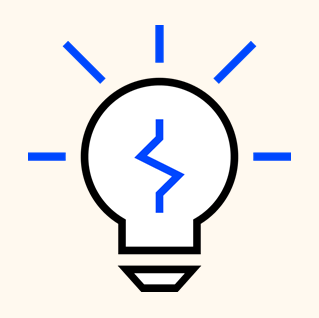Digital Assets Download - October 14, 2022
In case you weren’t keeping up with the Kardashians, one of them agreed to pay the SEC $1.26 million to settle an ongoing investigation into her promotion of the Ethereum Max token. To see what else you may have missed in the world of digital assets, check out the latest edition of Digital Assets Download, Powered by Mayer Brown.
For the Uninitiated: Digital Assets Download is a curated mix of insights and headlines that provide a Layer 3 Legal Perspective™ on the digital assets multiverse—created by Mayer Brown’s global Digital Assets, Blockchain & Cryptocurrency group. (Check out all of our previous editions of the Digital Assets Download)
The Lead Block
The Legislative Tortoise Chases the Cryptoasset Hare – UK Economic Crime Regulatory Reform
The UK government introduced a draft Economic Crime and Corporate Transparency Bill 2022-23 (the "Bill") in the House of Commons on 22 September 2022. The aim of the Bill is to amend the Proceeds of Crime Act 2002 ("POCA"), which regulates the recovery and confiscation of proceeds from criminal activities and money laundering. The UK government has said POCA has not kept pace with the development of cryptoassets and related technology and the Bill would amend POCA to apply expressly to criminal and civil asset recovery powers as they relate to cryptoassets. This Legal Update describes the proposed amendments to POCA and the principal impacts of the Bill.
EU Commission Proposes New Liability Rules on Products and AI
On 28 September 2022, the European Commission adopted proposals for two directives adapting non-contractual civil liability rules to artificial intelligence (“AI”). The proposed AI Liability Directive aims at targeted harmonization measures on civil liability for AI among the EU member states. The revised Product Liability Directive proposes adaptations to the producer’s no-fault (strict) liability for defective products that have caused damage to health or property or loss or corruption of data. Under the proposed Product Liability Directive, compensation is available when defective AI causes damage, without the injured person having to prove the manufacturer’s fault. Not only hardware manufacturers but also providers of software and digital services that affect a product’s function (such as a navigation service in an autonomous vehicle) can be held liable. Further, manufacturers can be held liable for changes they make to products they have already placed on the market, including when these changes are triggered by software updates or machine learning. The parallel proposal for an AI Liability Directive seeks to ensure that, where an injured person has to prove that an AI system caused damage in order to obtain compensation under national law (e.g., if someone failed a job interview because of discriminatory AI recruitment software), the burden of proof can be eased if certain conditions are met. The proposed liability rules for AI will complement other proposed EU legislation such as the AI Act, the Digital Services Act and the Digital Resilience Act.
News Node
The Digital Euro and the Importance of Central Bank Money
Proposal for a Regulation of the European Parliament and of the Council on Markets in Crypto-assets, and Amending Directive (EU) 2019/1937 (MiCA) - Letter to the Chair of the European Parliament Committee on Economic and Monetary Affairs
US Senator Hickenlooper to SEC Chair Gensler: Time for Clear Rulemaking on Digital Assets Instead of Continued Regulation by Enforcement
The US Financial Accounting Standards Board (FASB) Unanimously Voted to Require Companies to Account for Crypto Assets at Their Fair Value
Washington, D.C., Is Starting to Crack Down on Crypto
Portugal to Tax Crypto Gains in Next Year’s Budget Plan
America’s Oldest Bank, BNY Mellon, Will Hold That Crypto Now
Google Cloud to Let Users Pay With Bitcoin, Ethereum, Dogecoin via Coinbase
EU Lawmakers Pass Landmark Crypto Assets Regulation Bill
FTX Targets Latin America With Visa Debit Card—With Europe and Asia Next
US SEC Probing Bored Ape Creator Yuga Labs Over Unregistered Offerings: Report
Crypto Giant Coinbase Gets Singapore License
US Fines Crypto Exchange a Record $24 Million for Breaking Sanctions
A Red October for Crypto Hacks: Over $700 Million Stolen from DeFi Protocols This month So Far
Select Events
Selected events for deeper dives into different parts of the digital assets and DeFi world.
Cyber Spotlight: Ransomware 3.0 War Stories – Triple Extortion, Sanctions Risks, and Best Practices from the Trenches
The Biden administration and US regulators continue to assess how to fight ransomware cybercriminals using digital assets for illicit means. As part of our Cybersecurity & Data Privacy group’s commitment to Cybersecurity Awareness Month, our team is hosting “Cyber Spotlight: Ransomware 3.0 War Stories – Triple Extortion, Sanctions Risks, and Best Practices from the Trenches” on Tuesday, October 18, 2022.
Learn the Lingo

Proof of Work (PoW)
Proof of Work (PoW) is the consensus mechanism (see our July 22 Lingo here) used by the Bitcoin blockchain (among others). PoW blockchains are secured and transactions on them are verified by network participants—called miners—that compete to be the first to solve a mathematical puzzle. The miner that completes the puzzle first adds the newest batch of data or transactions to the blockchain. Miners are incentivized to participate in this system with a reward of new cryptocurrency for the miner that is the first to solve each puzzle and accurately validate the new data (corresponding to each transaction being validated on the network). PoW requires a large amount of computer processing power and the energy required to power those processes is one source of criticism of PoW consensus mechanisms.
Writing on the Wall, Translating ‘Crypto’ Terms with Mayer Brown
From Airdrop to Wrapped Token, our illustrated glossary, “Writing on the Wall, Translating Securities with Mayer Brown,” has been updated with additional digital assets and cryptocurrency terms. Check out our “featured” list for the crypto terms and the full list of terms.






